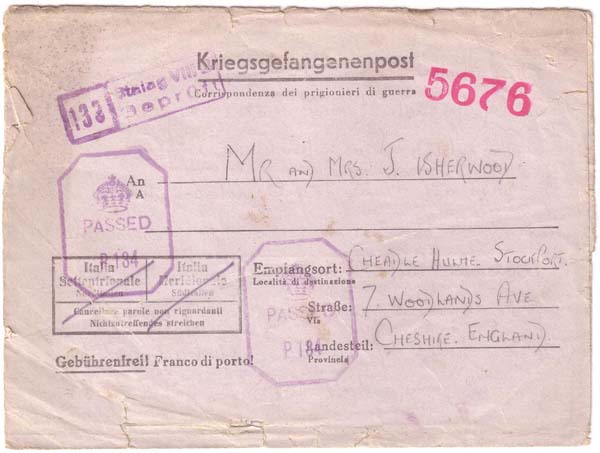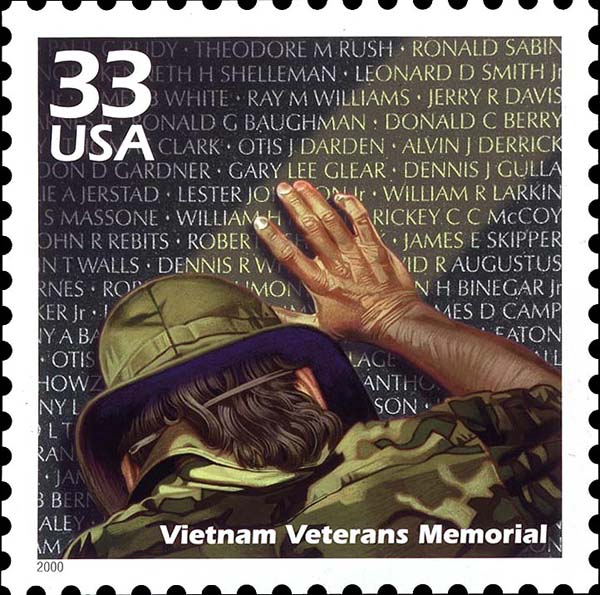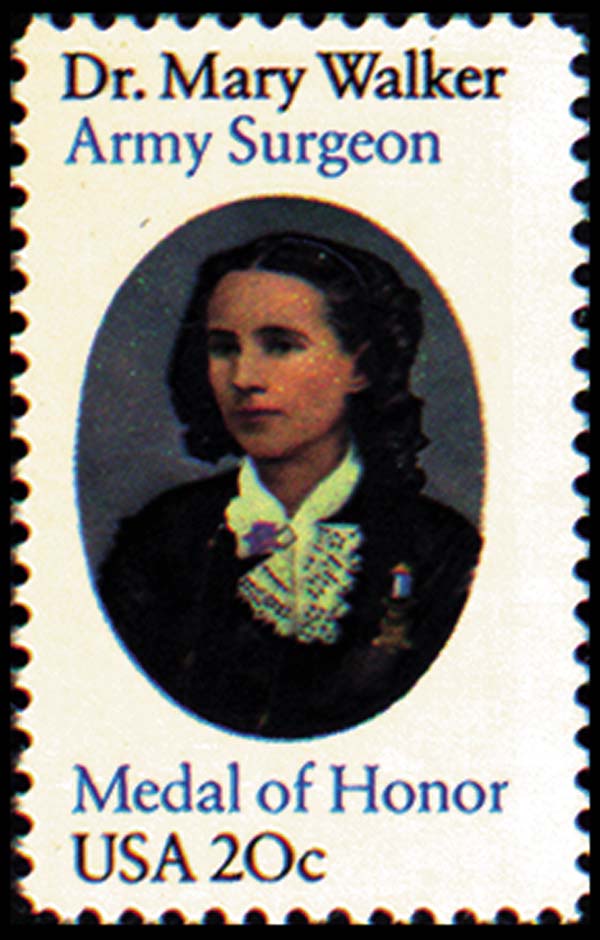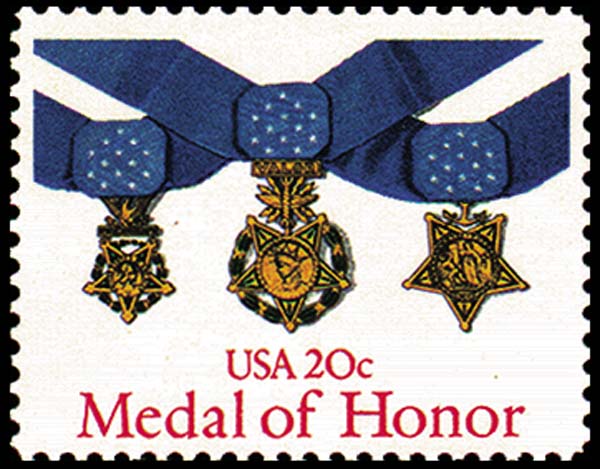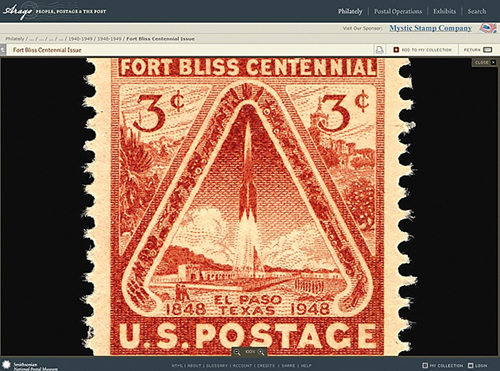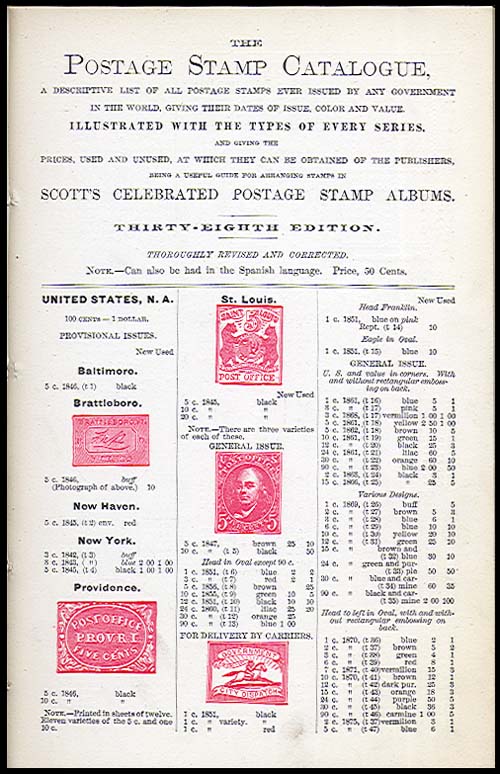Insights
insights
Veterans Day: stamps and covers remind us of service and sacrifices
By Janet Klug
The Ken Burns multi-episode documentary film The War recently aired on Public Broadcasting System television.
It was a serious commitment of time in front of the TV set, but I was glad that I watched. The documentary about World War II told parts of the story through the letters of those serving in the military and of their families. The film's use of these primary source documents is a great reminder that we who collect them are preserving history.
Letters sent to and from those who are serving their country reflect the pain of separation, the horror of war and hope for the future.
My first foray into collecting military postal history was the discovery of a picture postcard my mother had kept since she was a girl. The postcard illustrates a little girl holding a butterfly. It was sent to mom from her uncle, who was in an evacuation hospital in Mesnes, France, in April 1919. Mom would have been 2 years old when she received the card.
Her Uncle Joe, recovering from war wounds in No. 24 ward, addressed the card to "Kiddo Berg" and asked if she was planting an "after war garden." This card sparked an interest in military postal history in me that has not subsided.
Veterans Day, observed annually on Nov. 11, the anniversary of the end of World War I, is a good time to thumb through your stamp albums and remember those whose heroic deeds earned them a place of honor on a postage stamp. There are many.
Recently the United States Postal Service issued the 41¢ James Stewart stamp (Scott 4197) shown in Figure 1.
Stewart, who was universally known as "Jimmy," was an Academy Awardwinning actor, but he also was a decorated pilot in WWII, flying 20 combat missions over Germany in his Consolidated B24 Liberator heavy bomber.
The B24 is featured on the U.S. 37¢ stamp in the Advances in Aviation issue. Figure 2 shows the stamp.
Stewart was awarded the Distinguished Flying Cross (two awards), the Air Medal with three oakleaf clusters, and the European-African-Middle Eastern Campaign Medal with seven battle stars. The government of France also awarded him the Croix de Guerre.
Stewart attained the rank of colonel on active duty and remained in the U.S. Air Force Reserve after the war, retiring with the rank of brigadier general.
Stewart earned many decorations for his service to the United States, but the most decorated American soldier in WWII was a young enlisted man from Texas who received a battlefield promotion to second lieutenant.
He earned every medal for valor the United States had to give, including the Medal of Honor. His name is Audie Murphy.
Second Lieutenant Murphy was honored with the 33¢ stamp (Scott 3396) in the Distinguished Soldiers issue of 2000, shown in Figure 3.
Murphy's Medal of Honor citation states, "Murphy's indomitable courage and his refusal to give an inch of ground saved his company from possible encirclement and destruction."
Murphy became an actor in Westerns and action movies after the war, his greatest success coming with To Hell and Back, which is based on his autobiography. He died in an airplane crash in 1971.
The Medal of Honor is America's highest military decoration and is given only for "conspicuous gallantry and intrepidity at the risk of his life above and beyond the call of duty."
A 20¢ Medal of Honor stamp (Scott 2045) is shown in Figure 4. As depicted on the stamp, the suspension ribbon is the same for all but different medals are awarded to Army, Navy and Marine Corps, and Air Force personnel.
Dr. Mary Edwards Walker is the only woman ever to have been awarded the Medal of Honor. Walker was honored in 1982 with the 20¢ stamp (Scott 2013) shown in Figure 5.
Walker served in the U.S. Army during the Civil War disguised as a man until she was captured by the Confederates and her gender was revealed. She was the first American woman to serve as a military doctor.
Her Medal of Honor citation states that she "devoted herself with much patriotic zeal to the sick and wounded soldiers, both in the field and hospitals, to the detriment of her own health. She has also endured hardships as a prisoner of war for four months in a Southern prison while acting as contract surgeon."
Walker's Medal of Honor was rescinded in 1917, along with 900 others, when rules for making the award were changed. She bucked the system and continued to wear the decoration without authorization until her death two years later. President Jimmy Carter reinstated Walker's Medal of Honor in 1977.
The wellknown heroes and their battles have been illustrated profusely on the world's postage stamps, but heroic deeds have been and are still being performed by military personnel. A poignant reminder of these ordinary heroes is the Vietnam Veterans Memorial, shown on a 33¢ stamp (Scott 3190g) in the 1990s pane of the Celebrate the Century series. Figure 6 pictures the stamp.
It is the letters of ordinary heroes that end up in the hands of collectors. A few years ago, I acquired what I believe to be an entire correspondence from a British soldier incarcerated in a German prisonerofwar camp during WWII.
There are 72 POW letter sheets and postcards in the correspondence, which begins in July 1940. The sender was a signalman electrician with the Royal Corps of Signals.
In May 1940, his brigade was sent to Calais, France. His brigade's objective was to draw as much fire away from the evacuation of the British Expeditionary Force at Dunkirk as possible. During this action, the young signalman was captured and taken prisoner by Germans.
The prisoners were marched across France to western Germany where they were put on cattle trucks and transported to Stalag VIIIB, a POW camp near Lamsdorf, Germany (today Lambinowice, Poland).The site had previously been used by the Germans as a POW camp during the FrancoPrussian War and WWI.
The 72 letters and postcards describe work that the prisoner was given. At first he was assigned as an interpreter because he spoke German. Later, the signalman was sent to the coal mines where he worked for the remainder of the war.
The correspondence tells of the joy of receiving mail and parcels from home, and his aspirations for when he is released and comes home, and it documents his engagement via mail to his girlfriend.
The letters are upbeat and cheerful, encouraging his parents not to worry about him. Nearly every letter ends with the wishful thoughts, "I'll be seein' ya."
The more than 300,000 Allied POWs who passed through Stalag VIIIB did not have an easy time. They relied on Red Cross food parcels to supplement the meager rations the Germans issued them.
When the parcels did not come, the prisoners often did not have enough to eat. The penultimate letter in the group, shown in Figure 7, was written on Christmas Day 1944. It is the only pessimistic letter in the collection of 72. He laments, "I have reached the fifth Xmas in this dump. I am, touch wood, still sound in wind and limb."
Just a couple of weeks later in January 1945, the Soviet army advanced into Germany. The Stalag VIIIB prisoners of war were forcemarched westward in what would become known as the Lamsdorf Death March.
Most of the weakened prisoners were in no condition to trek hundreds of miles on foot in the middle of winter. Many died, but the young British signalman was rescued by Americans breaking through on the western front and survived.
As Thanksgiving follows on the heels of Veterans Day, let us all remember to thank those who have served or are serving in the military.
For more information about collecting military postal history, contact the Military Postal History Society, Ed Dubin, Secretary, Box 586, Belleville, MI 48112 or visit the web site at www.militaryphs.org
MORE RELATED ARTICLES
Headlines
-
US Stamps
Oct 7, 2024, 3 PMMcMurtrie dismissed as APS education director following Sept. 21 arrest
-
US Stamps
Oct 7, 2024, 12 PMVasiliauskas named president of Mystic Stamp Co.
-
US Stamps
Oct 6, 2024, 5 PMApgar souvenir card available
-
US Stamps
Oct 6, 2024, 4 PMFirst Continental Congress and U.N. stamps receive Scott catalog numbers
